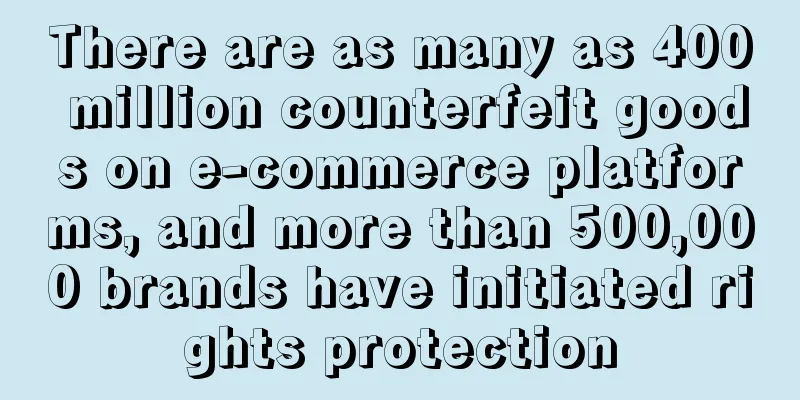Despite closing thousands of stores, the net profit surged by 400 million yuan. What did Suntech do right?

|
As we all know, traffic is a very important factor in opening a store on Amazon. To get top traffic, you not only need to have a unique listing, but also to invest in multiple channels for promotion, such as opening more stores and paving the way, which is also a common practice for many Amazon sellers. However, Savi Times did the opposite. While closing a large number of third-party stores, its revenue data continued to soar. What is going on?
In its latest prospectus, SDIC disclosed the number of stores on its third-party e-commerce platforms.
Compared with 2018, Savitech has reduced the number of stores on third-party platforms by nearly 1,000. In response, Savitech said that it would transfer and restore third-party stores that are in good operating condition and in line with the company's business strategy to the company or its subsidiaries, and close third-party stores that do not match the company's business strategy. The company will no longer open third-party stores in the future, and there will be no stores opened outside the company and actually operated by the company.
So, how will this move by Savitech pan out? Let’s take a look at the profitability of Savitech in the prospectus.
From 2018 to 2020, the operating income of Savitech was RMB 2.245 billion, RMB 2.878 billion, and RMB 5.253 billion, respectively, while the net profit was RMB -6.633 million, RMB 54.108 million, and RMB 450 million, respectively. In the past two years, Savitech has not only achieved a transformation from debt to profitability, but also multiplied its net profit several times !
In the prospectus, Savitech also specifically mentioned that the company will adopt a brand transformation strategy focusing on "multi-category, multi-channel" , carry out export cross-border B2C retail business on third-party e-commerce platforms such as Amazon, Wish, eBay, and Walmart, and sell competitive Chinese brands and private label products to countries and regions such as the United States, Germany, and the United Kingdom. At the same time, the company's vertical category self-operated website accurately taps users through channels such as Facebook and Google to carry out vertical category B2C cross-border retail business. In the gloomy cross-border circle, the success of Savi Times has undoubtedly brought hope to e-commerce companies, and also brought inspiration: the traditional distribution sales model has gradually been eliminated, and the policies of many e-commerce platforms have become increasingly stringent. It is urgent to build a company's own brand. With a brand, it can not only bring traffic and play the brand effect of other products, but also avoid being copied and a series of influences of Amazon policies, and better protect its own rights and interests. Cross-border e-commerce sellers do not necessarily have to make profits through third-party stores, and independent sites can also achieve great revenue. Savi era Amazon Shop |
<<: E-commerce grows 250%, Movado Group personalizes development
>>: Good news! Amazon Australia opens shopping delivery service to New Zealand
Recommend
What is Yunshang Cross-border? Yunshang Cross-border Review, Features
Yunshang Cross-border is a leading mobile Internet...
With a net profit of more than 60 million in half a year, Amazon's outdoor seller successfully IPOs!
In today's complex and ever-changing internat...
American furniture maker Herman Miller launches e-commerce platform
Recently, American office furniture manufacturer ...
Total value of U.S. returns in 2021 exceeds $760 billion, 10% of which are fraudulent returns
The report pointed out that in 2021 , US retail s...
What is Starry Sky Supply Chain? Starry Sky Supply Chain Review, Features
Star Supply Chain (Shenzhen Star Supply Chain Mana...
eBay predicts popular kitchen appliances in 2022, air fryers become a darling!
With the development of technology, smart kitchen...
2023 Amazon Advertising Unboxing Ceremony releases the latest overseas trends and marketing insights, empowering overseas companies to achieve global brands
On August 22, 2023 , the annual brand event "...
Large-scale promotion! Many FBA warehouses are temporarily closed, and the last-mile delivery in the United States is delayed
The latest situation of last-mile delivery! Recen...
76% of Germans value environmental protection of packaging
According to foreign media reports, recently, in ...
What is LeadongShop? LeadongShop Review, Features
LeadongShop is a one-stop cross-border e-commerce ...
Sales and profits doubled! Kakao Commerce sales exceeded 500 billion won
Kakao Commerce announced in its audit report on A...
Victoria, Australia, is "locked down" for 5 days, and the UK plans to impose the world's first "snack tax"
eBay owns nearly one-third of Germany's top 5...
What is RealWeb? RealWeb Review, Features
RealWeb is an international digital marketing age...
What is Kopari? Kopari Review, Features
Founded in 2015, Kopari is an American affordable...
Amazon cracks down, Chinese merchants violating regulations sentenced
After the beginning of the year, Amazon brought s...









